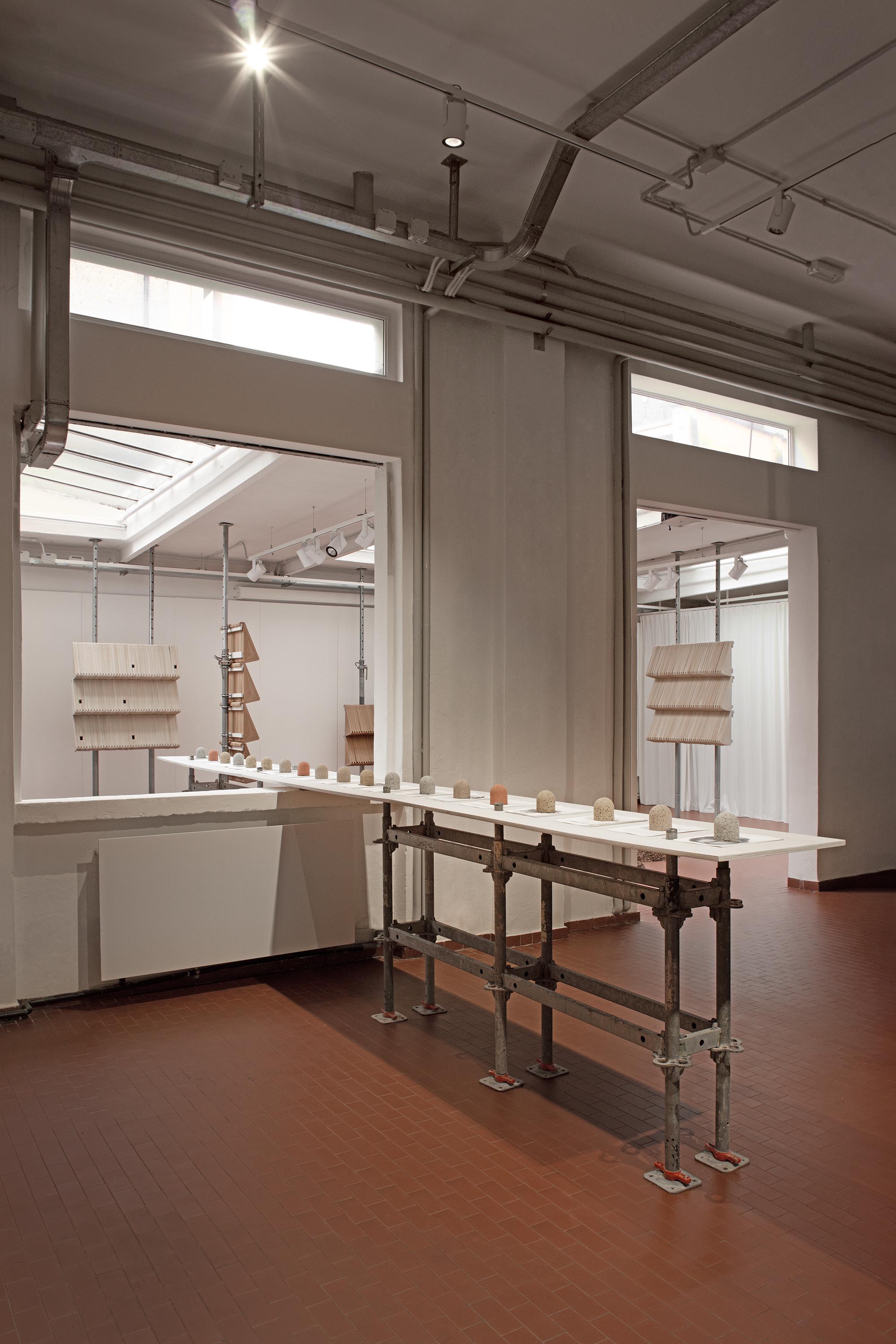


Micrographia raises a pivotal question: How can we design urban products that benefit humans and multiple species at the same time? The designer's approach aligns with recent insights in the sciences related to ecology, viewing cities as a refuge for wildlife and habitat capable of actively protecting biodiversity. The concept highlights the urgency to redefine the idea of “inclusive design” from a more-than-anthropocentric perspective and to design products with greater awareness of current changes. Carefully designed as urban interventions, the objects utilise mineral materials such as a newly developed geopolymer, earth and terracotta clay, blending functionality with narrative aesthetics, defining a distinct, more industrial trajectory for Studio Johanna Seelemann.
Considering cities as biodiversity protection, involves the need for creating proper nesting and foraging habitats. Providing those through the Habitat Façade elements, the Studio developed two versions, inhabitable both for wild insects or birds. Enzo Mari’s famous Milanese Panettone concrete bollards are reinterpreted using local clays and native plant seeds, which can be either used as paperweights or thrown into urban spaces around Milan as seed bombs, which, when blooming, will become pollinator food.
While the elements shown in the exhibition may seem sculptural at first glance, they unveil a deliberate purpose upon closer examination. The Oase vases employ an ancient irrigation system to minimise water loss in cities on one hand. The light-coloured low-fired terracotta vases with lids are buried beside plants to efficiently deliver water directly to their roots thanks to the semi-permeable material. Conversely, the darker high-fired and internally glazed objects are transformed into traditional vases. Studio Johanna Seelemann's approach seamlessly oscillates between contextual exploration and commercial applications, strategically positioning the designer to strike a balance between ecological considerations and tangible proposals.
For the occasion of the 2024 Salone del Mobile, Studio Johanna Seelemann was invited by Park Associati to develop a project in their Milanese venue. Sharing with the designer an experimental approach to design and the urgency to tackle significant research topics, Park Associati is committed to supporting emerging designers by coordinating production and promoting interdisciplinary collaboration with a network of local professionals.
Considering cities as biodiversity protection, involves the need for creating proper nesting and foraging habitats. Providing those through the Habitat Façade elements, the Studio developed two versions, inhabitable both for wild insects or birds. Enzo Mari’s famous Milanese Panettone concrete bollards are reinterpreted using local clays and native plant seeds, which can be either used as paperweights or thrown into urban spaces around Milan as seed bombs, which, when blooming, will become pollinator food.
While the elements shown in the exhibition may seem sculptural at first glance, they unveil a deliberate purpose upon closer examination. The Oase vases employ an ancient irrigation system to minimise water loss in cities on one hand. The light-coloured low-fired terracotta vases with lids are buried beside plants to efficiently deliver water directly to their roots thanks to the semi-permeable material. Conversely, the darker high-fired and internally glazed objects are transformed into traditional vases. Studio Johanna Seelemann's approach seamlessly oscillates between contextual exploration and commercial applications, strategically positioning the designer to strike a balance between ecological considerations and tangible proposals.
For the occasion of the 2024 Salone del Mobile, Studio Johanna Seelemann was invited by Park Associati to develop a project in their Milanese venue. Sharing with the designer an experimental approach to design and the urgency to tackle significant research topics, Park Associati is committed to supporting emerging designers by coordinating production and promoting interdisciplinary collaboration with a network of local professionals.
Concept, Design Johanna Seelemann
CoordinationCostanza Nizzi
Technical Sponsors
Scientific Support
Special ThanksGustavo Gandini, MAKK Cologne, Eric Maget, Susann Paduch, Marco Sorrentino, Federica Arici, Marianna Merisi, Francesca Pellizzaro, Ester Pirotta
Studio Team
Picture CreditsNicola Colella
Exhibition︎︎︎ ‘Micrographia - Redesign for Biodiversity’, Park Associati Hub, Salone del Mobile, Milan, 2024
Johanna Seelemann
CoordinationCostanza Nizzi
Technical Sponsors
Ricehouse, Arche3D, Primat
Scientific Support
Vivaio Bicocca
Special Thanks
Gustavo Gandini, MAKK Cologne, Eric Maget, Susann Paduch, Marco Sorrentino, Federica Arici, Marianna Merisi, Francesca Pellizzaro, Ester Pirotta
Studio Team
Gigi Totaro, Marc Goldbach, Lara Erdmann, Laurin Böhm
Picture Credits
Nicola Colella
Exhibition︎︎︎ ‘Micrographia - Redesign for Biodiversity’, Park Associati Hub, Salone del Mobile, Milan, 2024
Context
Milan Design Week 2024
Park Associati Hub




